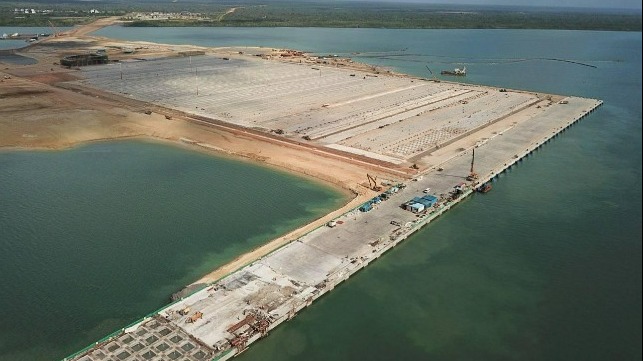Kenya Seeks $157M Loan for Lamu Port Phase I Completion

The Kenya Ports Authority intends to borrow $157 million to complete the construction of the first phase of Lamu Port, a new facility struggling to attract shipping lines following the commissioning of its first berth in May.
The port has put out an expression of interest seeking financing from local and international lenders for the operation of their first three berths. KPA has provided a breakdown that shows $55 million going towards the purchase of yard operations equipment, $45 million towards general equipment, security and ICT installation, $29 million in completing the construction works and $28 million in marine equipment.
“Phase 1 of the project involves construction of the first three berths and associated infrastructure, each with a depth of 17.5 meters and a length of 400 meters. The three berths are designed to handle container, general and bulk cargo,” said John Mwangemi, KPA acting CEO in tender documents.
He added that the physical superstructure for all the three berths as well as yard number one have been completed, while yards number two and three are under construction and are expected to be completed in October, subject to availability of funding. The remaining 20 berths are planned for construction by private investors under public-private partnership arrangements.
In May, President Uhuru Kenyatta inaugurated the first berth at the port with most of the equipment including cranes, trailers, gantries, forklifts, spreader and oil spill response borrowed from Mombasa port. Since then, lack of sufficient yard operation equipment has forced Lamu Port to only attract ships that have their own gear for operations, ro/ro ships and motor vehicle carriers.
Only five container ships have docked at the facility since it was commissioned, further raising concerns over the viability of the facility. It is the linchpin of the wider Lamu Port South Sudan-Ethiopia Transport (Lapsset) Corridor, a $24 billion megaproject connecting the Kenyan coast with inland markets.
“Lamu Port is planned to take full advantage of the current shipping trends where larger vessels are being deployed requiring longer berths with deeper depths,” said Mwangemi.
